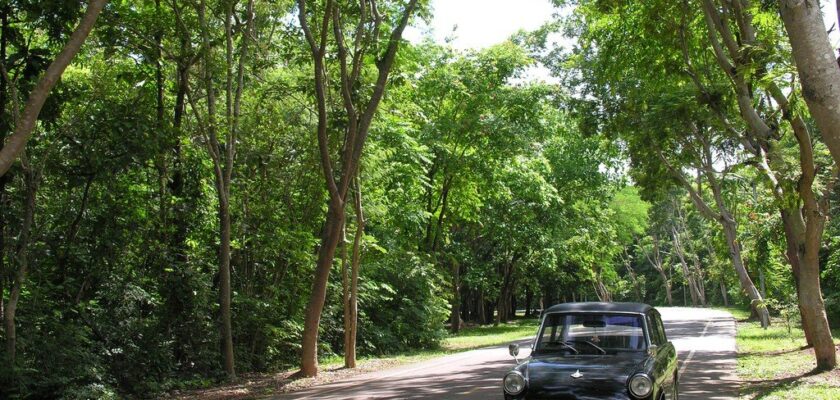Kamphaeng Phet
Kamphaeng Phet is a historical monument with many temples in northern Thailand, the administrative center of the province of the same name. The landscape around Kamphengphet is defined by jungle-covered mountain ranges, while the town itself and the very interesting ruins stand on the Ping River. It was once one of the most prosperous cities in the kingdom of Sukhothai. Only the ruins of that era are a reminder of past greatness.
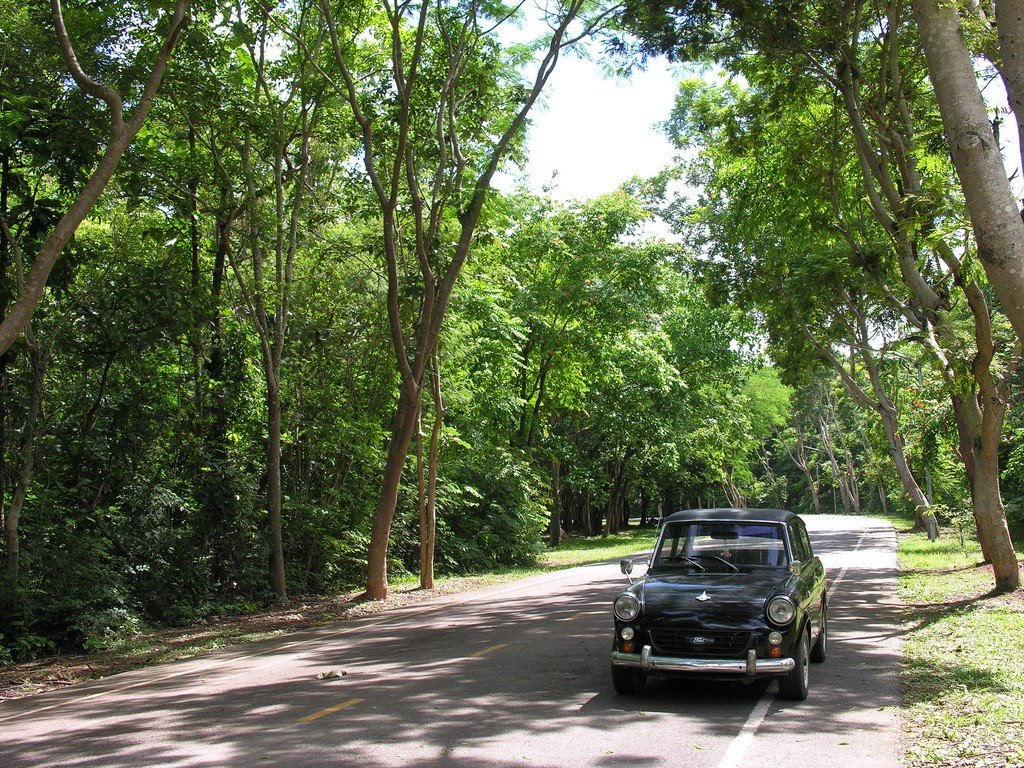
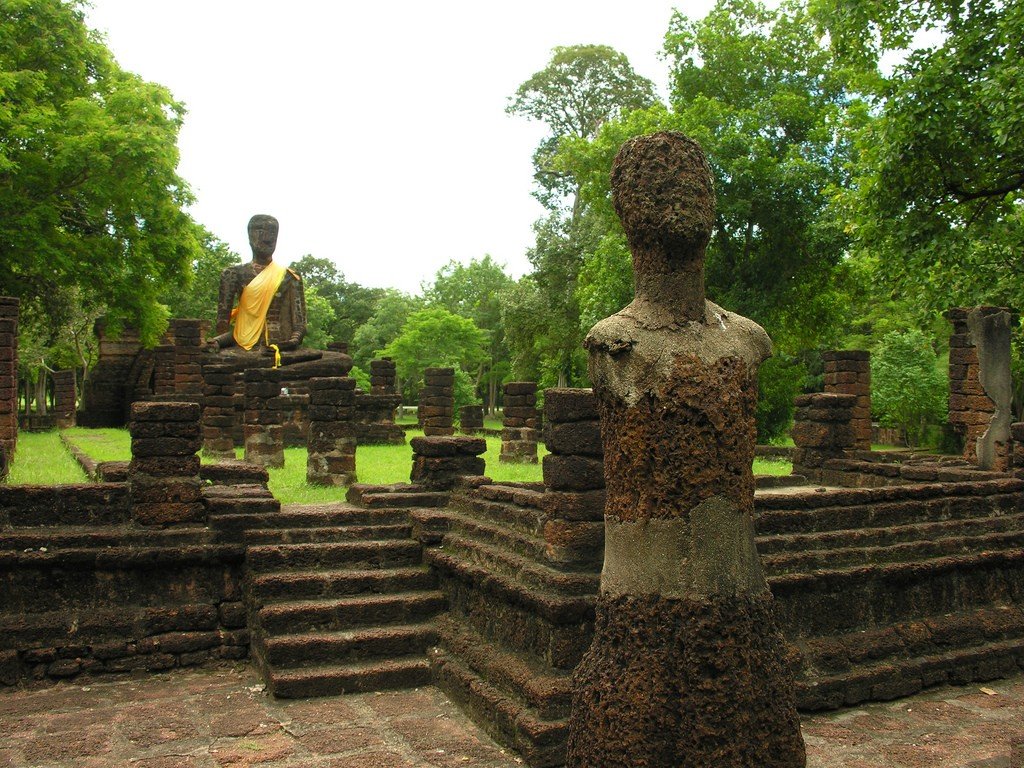
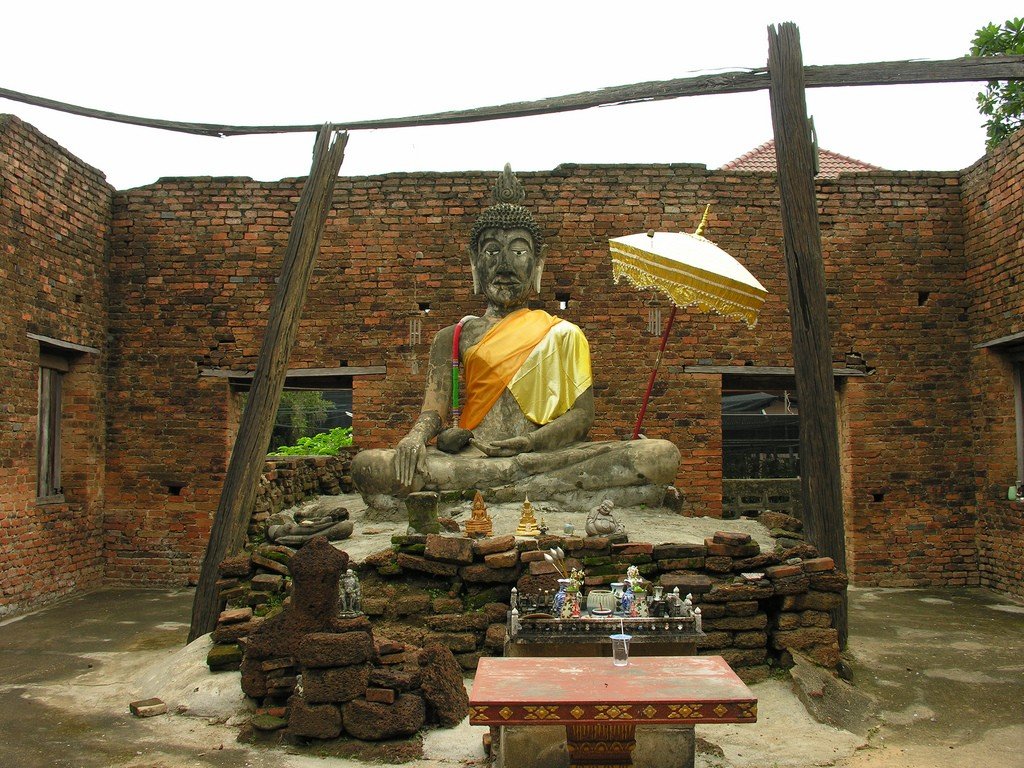
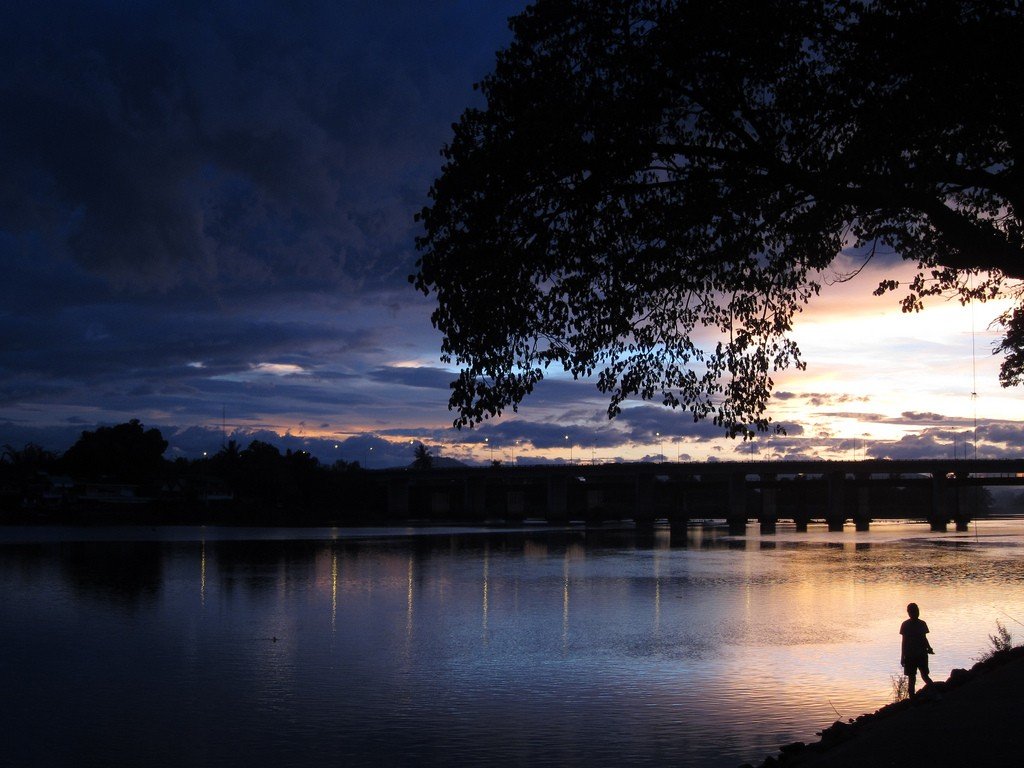
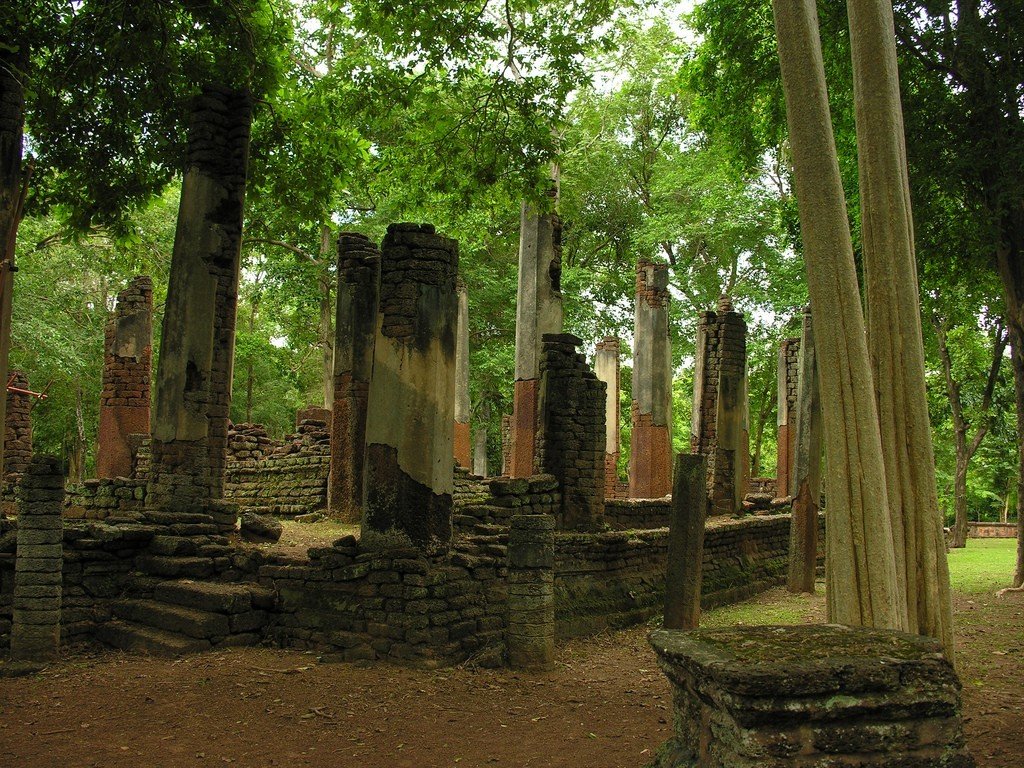
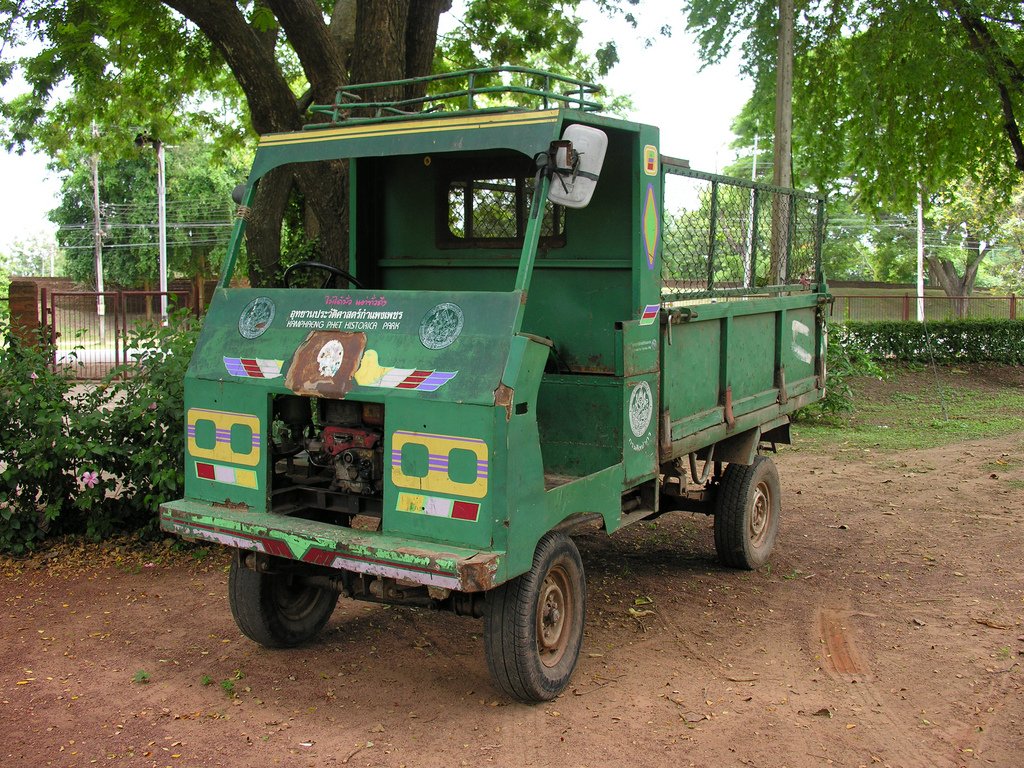
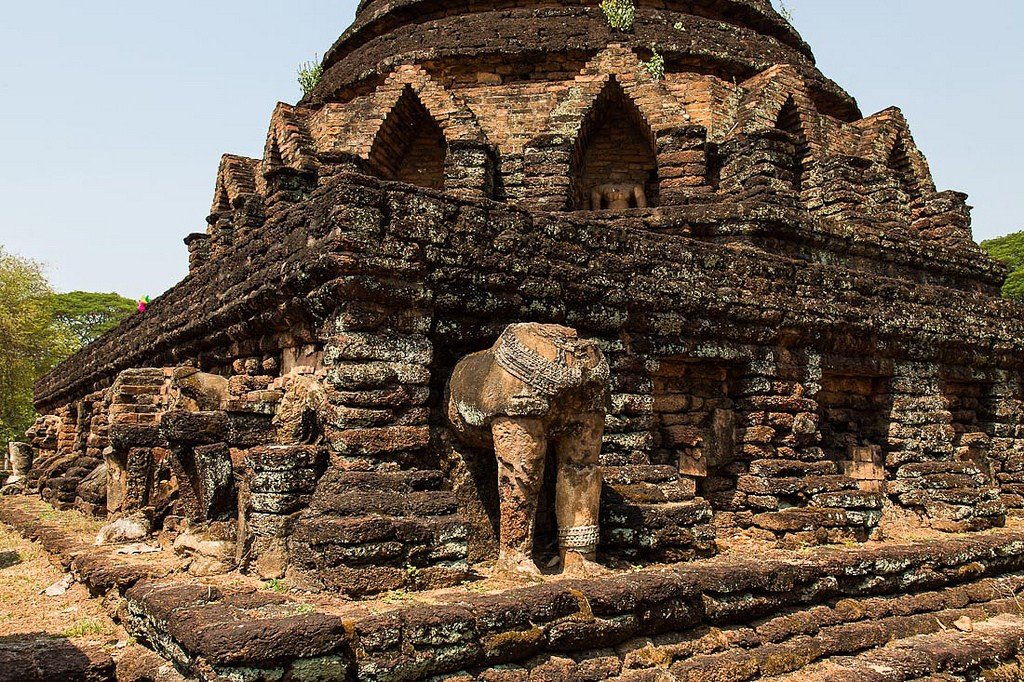
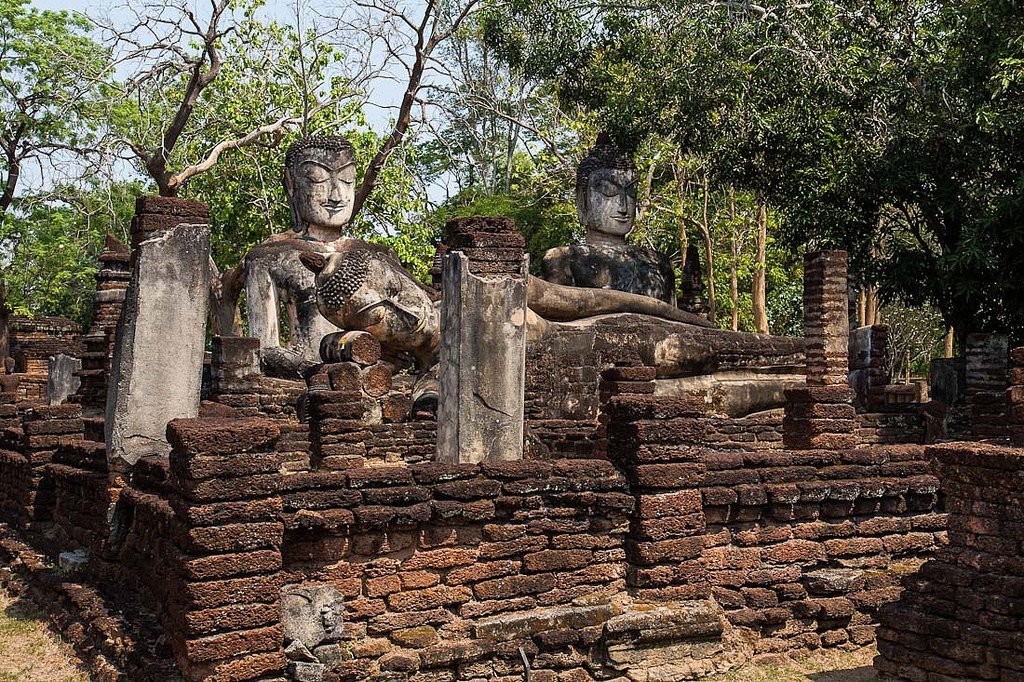
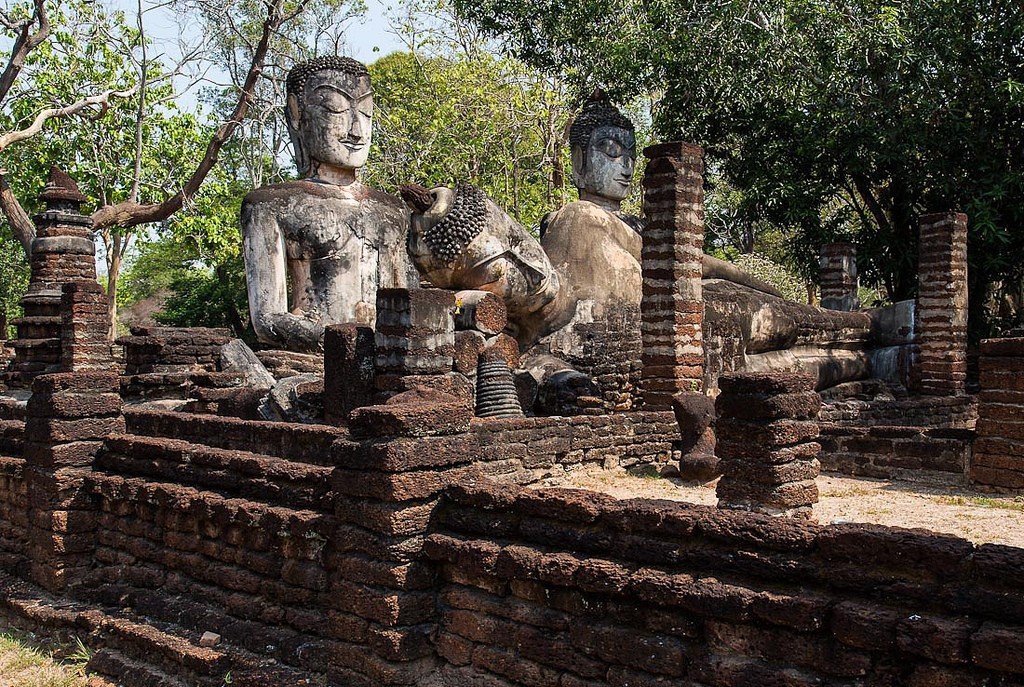
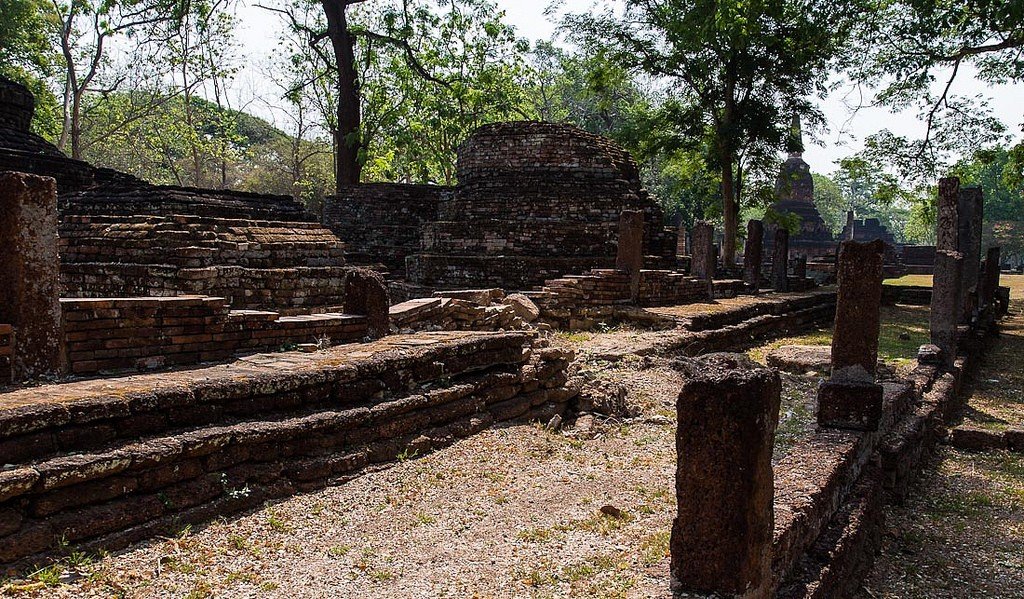
General Information
Not far from Kamphengphet, Thailand’s last teak forests begin, stretching far to the north. After a total ban on cutting down tropical trees, imposed by the king in 1988 after terrible floods, no more teak trunks are rafted down the Ping River to Bangkok.
King Lee Thai (1347-1368) built this city, an outpost of the Sukhothai Empire, to replace the old Chakangraw on the other side of the river (only minor traces of Chakangraw remain today). However, the kingdom of Sukhothai existed only until 1376, and therefore the heyday of Kamhengphet was short. However, as early as in the XV-XVI centuries new temples were erected here. Construction activity stopped only at the end of the 16th century, after the Burmese attacked, looted and partially destroyed the city.
.Kamphengphet sights
Chakangraw
If you approach Kamphengphet from the south on the National Auto-Chakangraw Road No. 1, you pass the place where the town of Chakangraw once stood before the bridge over the Ping River. It is recognizable by the laterite ruins of the Pomthungsethi Fort and four fine restored chedi. A tall, multi-pitched, probably Burmese-style, wrought-iron umbrella-topped 20th-century chedi stands to the left of the road in the former Boromathat Wat. It was erected in the Bangkok era over three Sukhothai-era chedis, which still stand inside (you can enter the chedi). Beyond the bridge, the new town begins on the right and the walled old area on the left, where the 6-meter-high earthen ramparts are still partially intact.
.Museum
If you haven’t been to Sukhothai yet, the first place to visit is the museum next to the ruins with numerous archaeological finds from Kamphengphet. The graceful and harmonious style of the Sukhothai era is immediately striking. There are also sculptures, including bronze sculptures, from all periods of Thai art, including masterpieces such as a bronze Buddha in the Uthong style, bronze figures from the 13th century, and examples of the Lop Buri and Dvaravati styles.
.Wat Phra-Tat
Opposite the museum are the ruins of Wat Phra-Tat, the second most important monastery in the city. The bell-shaped chedi on a square platform reveals Sinhalese (Ceylonese) influence. At the time of its construction, the austere trend of Buddhism, still flourishing today in Sri Lanka, was also widespread in Thailand. The chedi is surrounded by pillars, and inside used to house a relic that has disappeared to an unknown destination. Only the foundation and the remains of a few rectangular pillars remain of the vihan.
.Wat Phrakaew
Wat Phra Kaew stands next to Wat Phra Tat on the former palace grounds. It was a royal temple, not a monastic abode. Particularly impressive are the various Buddha figures standing alone amidst the landscape, surrounded by ruins. A colossal statue on the high terrace of a former bot in front of the ruins of a bell-shaped chedi has lost its facial features to the onslaught of winds and weather. In the center of the now defunct vihan stands a huge figure of Buddha, whose face has also been touched by erosion. It is surrounded by many smaller statues arranged in a rectangle, reminiscent of modernist sculpture: the shapes of the body, head and limbs are completely abstract. They are actually laterite hulks from which the plaster has completely collapsed. Notable is the reclining Buddha, whose finely detailed features have been spared by time. On the platform of the large bell-shaped chedi are the remains of the thirty-two stone lions that adorned it, in some of the sixteen niches of the upper part still stand statues of Buddha. A symbolic footprint of the Buddha made of fired clay can be seen on the outskirts of the grounds.
.Lakmyang
To the north of Phrakeu Wat is the town’s foundation stone, the much revered Lakmyang, as well as two oblong ponds around a third, circular one.
Other ruinsThe most significant and picturesque ruins are outside the city walls in a beautiful park that can be found by signposting “Arunyik Area”. In the forests north of the city, monks of the strict Buddhist school built magnificent monasteries in the Sukhothai style with strong Sinhalese (Ceylonese) influence.
Wat Pa-Myt, Wat Phra-Non
Here you first find yourself at the ruins of Wat Pa-Myt Nok, followed by the smaller Wat Pa-Myt; next is Wat Phra-Non, the Temple of the Lying Buddha, which is much more substantial. The first building is a large bot, of which the columns and outer walls with the narrow vertical windows characteristic of the Sukhothai period are preserved. Behind it is the vihan, a square structure with four rows of powerful pillars, four in each. The statue of the reclining Buddha was once kept here, of which only parts of the long pedestal remain. Of the two chedi of this temple, the larger one was behind the vihan: bell-shaped, with an octagonal plinth on a square platform.
.Wat Si Iriyabot
The mondhope of Wat Si Iriyabot once contained statues depicting the Buddha in the four basic positions (sitting, standing, walking, lying down). This explains the name: “Si” means four and “Iriyabot” means position. A colossal figure of a standing Buddha has been preserved. It is considered one of the best sculptures of the Sukhothai era. Fragments remain of the walking Buddha, while the other two statues have been completely destroyed.
.Wat Chang-Rop
The ruins of the Chang Rop temple standing on a hill with a tall bell-shaped chedi, from which, however, one base with traces of elegant moldings (running birds) survived. The chedi stood on 68 elephants. Their upper halves still stick out of the masonry, decorated in the intervals with stucco trees and clay demons. Four steep staircases lead to the top of the chedi.
.Wat Chau Awat Yai
The deep pond next to Wat Chau-Awat Yai was created because stone was broken at this spot to build a temple. The area is surrounded by a low double wall, with two chedis decorating the entrance. In the center, the remains of a vihan can still be recognized. Small chedis on both sides of the courtyard lie in ruins. The large chedi on a stepped plinth is well preserved (except for a broken spire).
.Wat Chang Lom
The Chang Lom temple, which stands on a hill, has the remains of a co-located chedi on a square platform. Only fragments remain of the elephant sculptures that formerly supported the upper part of the structure. The two surviving figures now stand in front of the entrance to the Kamphengphet National Museum.
.How to get there
- By car:From Bangkok on National Highway No. 1 (360 km), from Phitsanulok on National Highways No. 117/115 (102 km), from Sukhothai on National Highway No. 101 (76 km).
- By airplane:The nearest airport is Phitsanulok (from Bangkok there are several flights a day).
